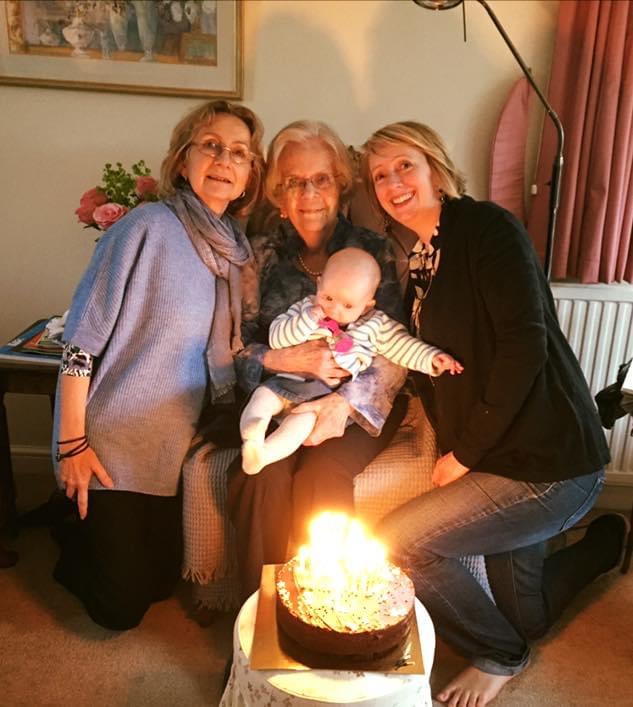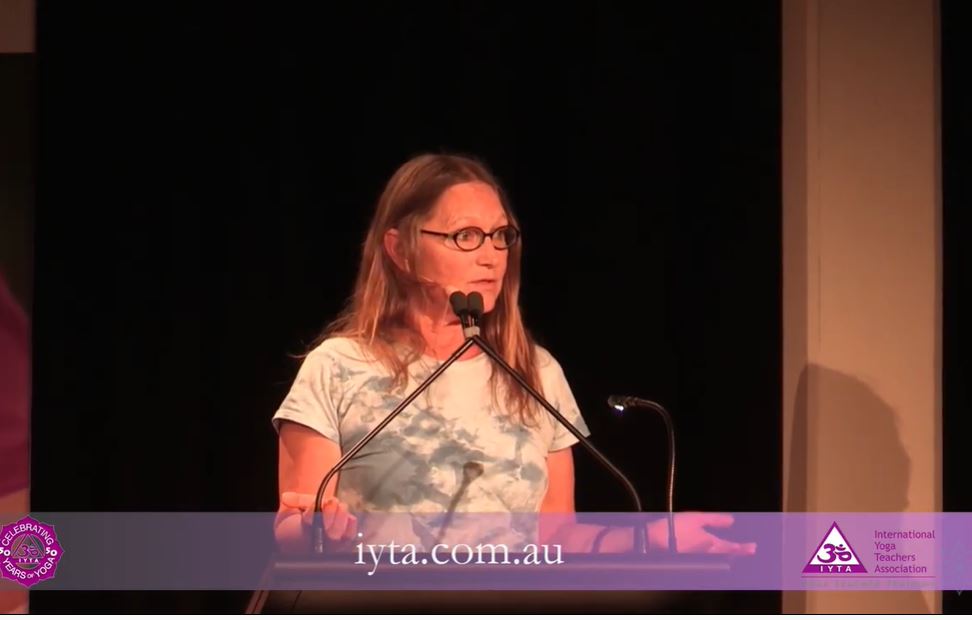Patricia is a mother-of-three, grandmother to four and sadly lost her own mother two years ago. It’s a reminder that Mother’s Day can be a bitter sweet time – to grieve, appreciate, remember and to love.
Whether you are celebrating as a mum or for your mum, this three-hour workshop with Patricia – the Vice President of the Australasian Association of Yoga Therapists, will be a time to recharge, learn and reflect.
We sat down with Patricia to find out more about her life as a mum and what she will be covering in this unique online workshop focusing on chakras, mothering archetypes and of course, yoga.
(Patricia is pictured with four generations of her family – her mother, herself, her daughter, Amy and granddaughter, Adeline).
Q: What does Mother’s Day mean to you?
Mother’s Day is a time to acknowledge your own birth mother and spend time with her or if you are not able to physically be with her to spend some time contacting her in some way, telephone, messenger face-to-face, or online. My own mother lived in the UK and passed away two years ago. The UK Mothers’ day is in March instead of May here which was hard to get my head around. I connected with her regularly but I liked to send flowers for Mothers’ Day because I knew they brought her pleasure.
Even when your mother has passed I think we can acknowledge and give thanks to her for the gift of life. We are here because of her and we honour her for that.
Q: How will you celebrate?
Even though my mother is no longer here, I feel her presence with me in my heart and I will spend time in my meditation to thank her for all she did for me. She was always very supportive, loving and giving.
I am a mother myself now with three adult children with families of their own. And apart from my youngest child, we’ll all be getting together in Sydney at some stage.
Q: How will you weave the chakras into the Mother’s Day class?
We will take a journey in the development of the child (and ourselves) as we begin and go through life. As mothers it is valuable to look at the stages of development that need to be worked through to allow us to fulfil our potential in this life as humans. To reach self-realisation.
Q: Can you expand on this concept and how it will work within the framework of the workshop:
We will visit the archetype of the mother in all its facets. Earth mother goddess and both positive and negative aspects of the mother archetype as seen by modern psychology (Jung) and in traditional literature and myth (eg fairy godmother and wicked stepmother). And explore how these relate to the chakras.
I will also be touching on the corresponding levels of development of the Chakras as seen in Maslow’s work and hierarchy of needs work and that of Erikson’s Stages of Development. As I intend this workshop to be more experiential than theoretical, we will be using mantra and meditation as part of this work to balance and connect with the energy flowing through our chakras.
Q: Anything else you would like to add?
My aim for the workshop is to provide an enjoyable time of exploration into the energies of Creation which have brought us here and we will discover that we return to the energies of the heart as the Centre of all. What could be more appropriate for Mother’s Day but connecting with that caring loving energy of the heart!




